Development and Application of Dual-Polarization Antenna for Dielectric Logging Sensor
Abstract
:1. Introduction
2. Theoretical Analysis
2.1. Performance Analysis of Single Antenna
2.2. Transmission Performance Simulation of Dual Antennas
3. Antenna Development and High-Temperature and Pressure Test
3.1. Antenna Development
3.2. Measurement of High-Temperature and Pressure Endurance of Antenna
4. Practical Logging Application in Oilfield
5. Conclusions
Author Contributions
Funding
Institutional Review Board Statement
Informed Consent Statement
Data Availability Statement
Conflicts of Interest
References
- Clark, B.; Allen, D.F.; Best, D.L.; Bonner, S.; Jundt, J.; Luling, M.; Ross, M.O. Electromagnetic propagation logging while drilling: Theory and experiment. SPE Form. Eval. 1990, 5, 263–271. [Google Scholar] [CrossRef]
- Freedman, R.; Vogiatzis, J.P. Theory of microwave dielectric constant logging using the electromagnetic wave propagation method. Geophysics 1979, 44, 969–986. [Google Scholar] [CrossRef]
- Coope, D.; Shen, L.C.; Huang, F.S.C. The theory of 2 MHz resistivity tool and its application to measurement-while-drilling. Log Anal. 1984, 25, 1–11. [Google Scholar]
- Aksel’rod, S.M. Measurement of the dielectric constant of rocks in well. Prikl. Geofiz. 1968, 52, 180–191. [Google Scholar]
- Jin, G.; Ma, S.; Antle, R.; Al-Ofi, S.M. Reservoir Characterization for Isolated Porosity from Multi-Frequency Dielectric Measurements. In Proceedings of the International Petroleum Technology Conference, Riyadh, Saudi Arabia, 21–23 February 2022. [Google Scholar]
- Zhao, Z.A.N.; Wang, Y.; Lai, Q.; Li, K.X.; Zhao, X.R.; Wu, J.L.; Zhao, H.P.; Yu, D.G. Fluid Identification Derived from Non-Electric Measurements and Reservoir Characterization of Tight Carbonate in Sichuan Basin, China. In Proceedings of the SPE Annual Technical Conference and Exhibition, Dubai, United Arab Republic, 21–23 September 2021. [Google Scholar]
- Hanif, A.; Frost, E.; Lei, F.; Nikitenko, M.; Blinov, M.; Velker, N. A Fast ANN Trained Solver Enables Real-time Radial Inversion of Dielectric Dispersion Data & Accurate Estimate of Reserves in Challenging Environments. In Proceedings of the SPE Middle East Oil & Gas Show and Conference, Manama, Bahrain, 28 November–1 December 2021. [Google Scholar]
- Guo, H.; Zhang, H.; Li, G.; Yan, X.; Zhang, W.; Wang, Y.; Xiao, L.; Liu, D. Prediction of Water Saturation for Tight Sandstone Reservoirs by Using Array Dielectric Logging ADL. In Proceedings of the SPE Gas & Oil Technology Showcase and Conference, Dubai, United Arab Emirates, 21–23 October 2019. [Google Scholar]
- Blenkinsop, M.; Baker, P.; Clavier, C.; Kenyon, W.; des Igneris, S. Deep Electromagnetic Propagation Tool Interpretation. In Proceedings of the SPWLA 27th Annual Logging Symposium, Houston, TX, USA, 9–13 June 1986. [Google Scholar]
- Rau, R.; Davies, R.; Finke, M.; Manning, M. Advance in High Frequency Dielectric Logging. In Proceedings of the SPWLA 32nd Annual Logging Symposium, Midland, TX, USA, 16–19 June 1991. [Google Scholar]
- Li, C.; Deng, S.; Li, Z.; Fan, Y.; Zhang, J.; Yang, Y. Application of high-frequency dielectric logging technology for shale oil production. Prog. Electromagn. Res. Lett. 2021, 100, 53–61. [Google Scholar] [CrossRef]
- Li, C.; Deng, S.; Li, Z.; Fan, Y.; Zhang, J.; Yang, J. Numerical simulation and application of response characteristics of high-frequency dielectric logging instrument. Prog. Electromagn. Res. M 2022, 107, 1–12. [Google Scholar] [CrossRef]
- Forgang, S.; Corley, B.; Garcia, A.; Hanif, A.; Le, F.; Jones, J.; Frost Jr, E.; Perry, S. A New Multi-frequency Array-dielectric Logging Service: Tool Physics, Field Testing, and Case Studies in the Permian Basin Wolfcamp Shale. In Proceedings of the SPWLA 60th Annual Logging Symposium, The Woodlands, TX, USA, 17–19 June 2019. [Google Scholar]
- Schlumberger Technology Corp. New technology and application of dielectric logging. New Technol. Oilfield 2011, 23, 36–52. [Google Scholar]
- Halliburton Company. LOGIQ High-Frequency Dielectric Tool Manual. Open-Hole Wireline Serv. 2011, 3–8. [Google Scholar]
- Wang, B.; Li, K.; Kong, M.; Zhao, J.; Gao, Y. A borehole fluid saturation evaluation method using unidirectional monopole UWB antenna. IEEE Geosci. Remote Sens. Lett. 2015, 12, 429–433. [Google Scholar] [CrossRef]
- El Amrani, A.; El Bouhali, M.; Bouya, M.; Benali, A.; Faqir, M.; Hadjoudja, A.; Ghogho, M. Electrical Performance of Glass Interposer-based 3D Packaging: Modeling and Simulations. In Proceedings of the 1st International Conference on Electrical and Information Technologies (ICEIT), Marrakech, Morocco, 25–27 March 2015; pp. 16–19. [Google Scholar]
- Li, Z.; Yang, Z.; Ji, Y.; Li, C.; Zhang, J. The response characteristics of dielectric logging in anisotropic formation. In Proceedings of the photonics and electromagnetics research symposium, Xiamen, China, 17–20 December 2019; pp. 2353–2362. [Google Scholar]
- Wait, J.R. General solution for excitation by slotted aperture source in conducting cylinder with concentric layering. IEEE Trans. Microw. Theory Tech. 1987, 35, 321–325. [Google Scholar] [CrossRef]
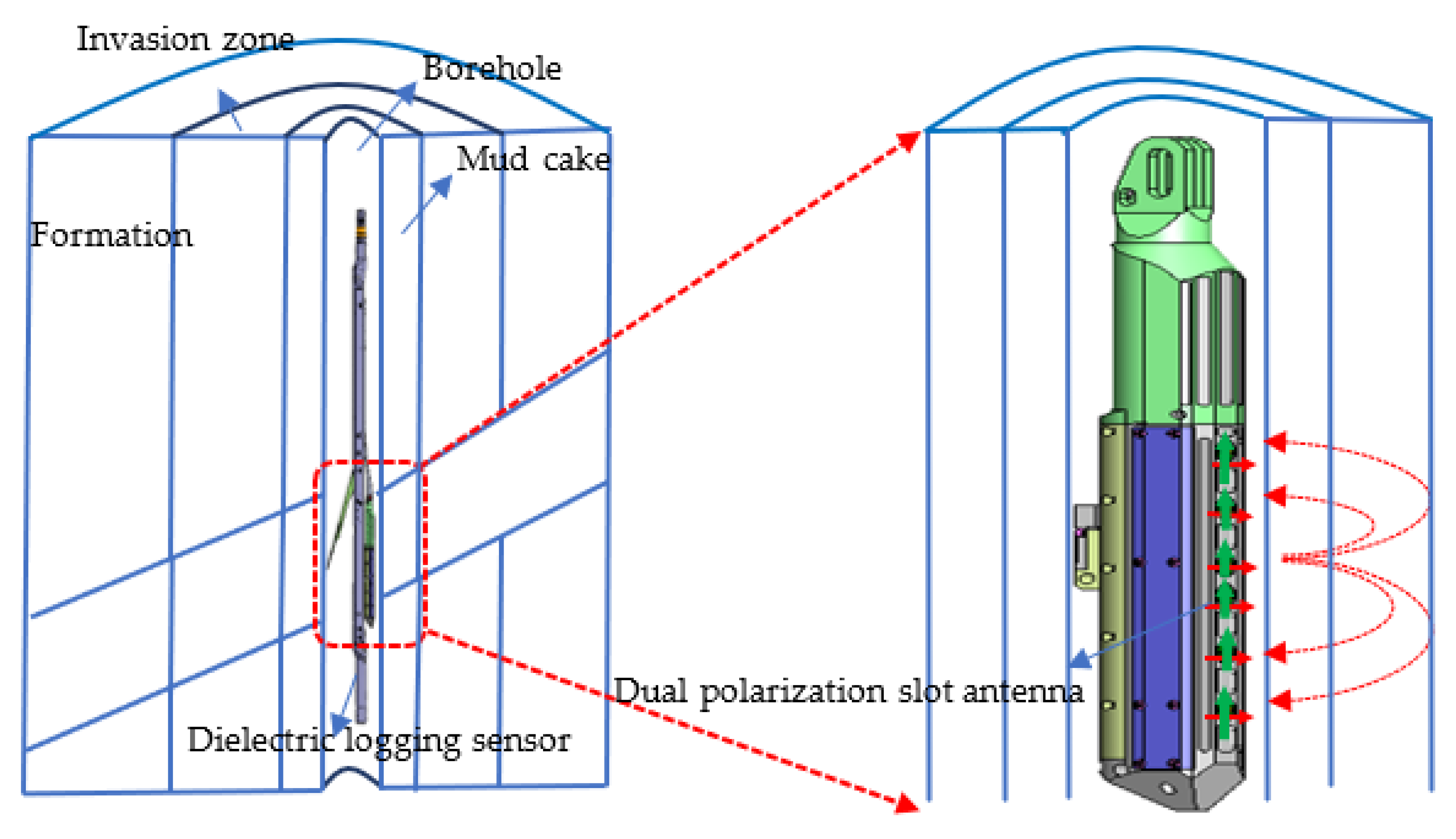

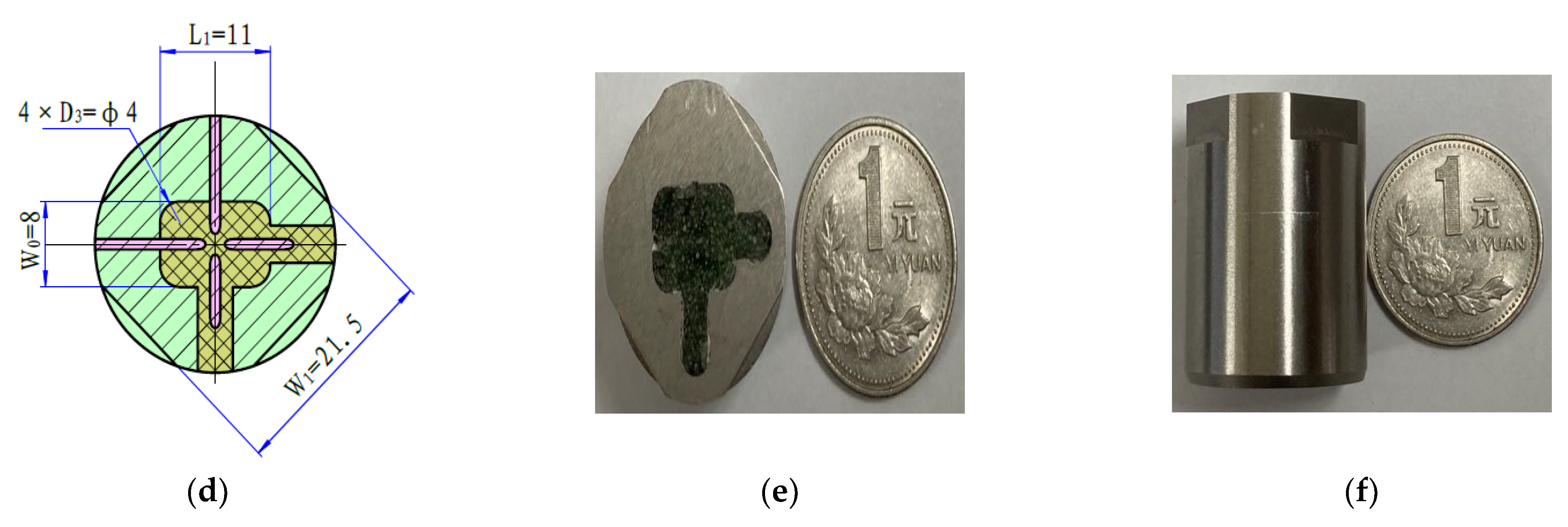

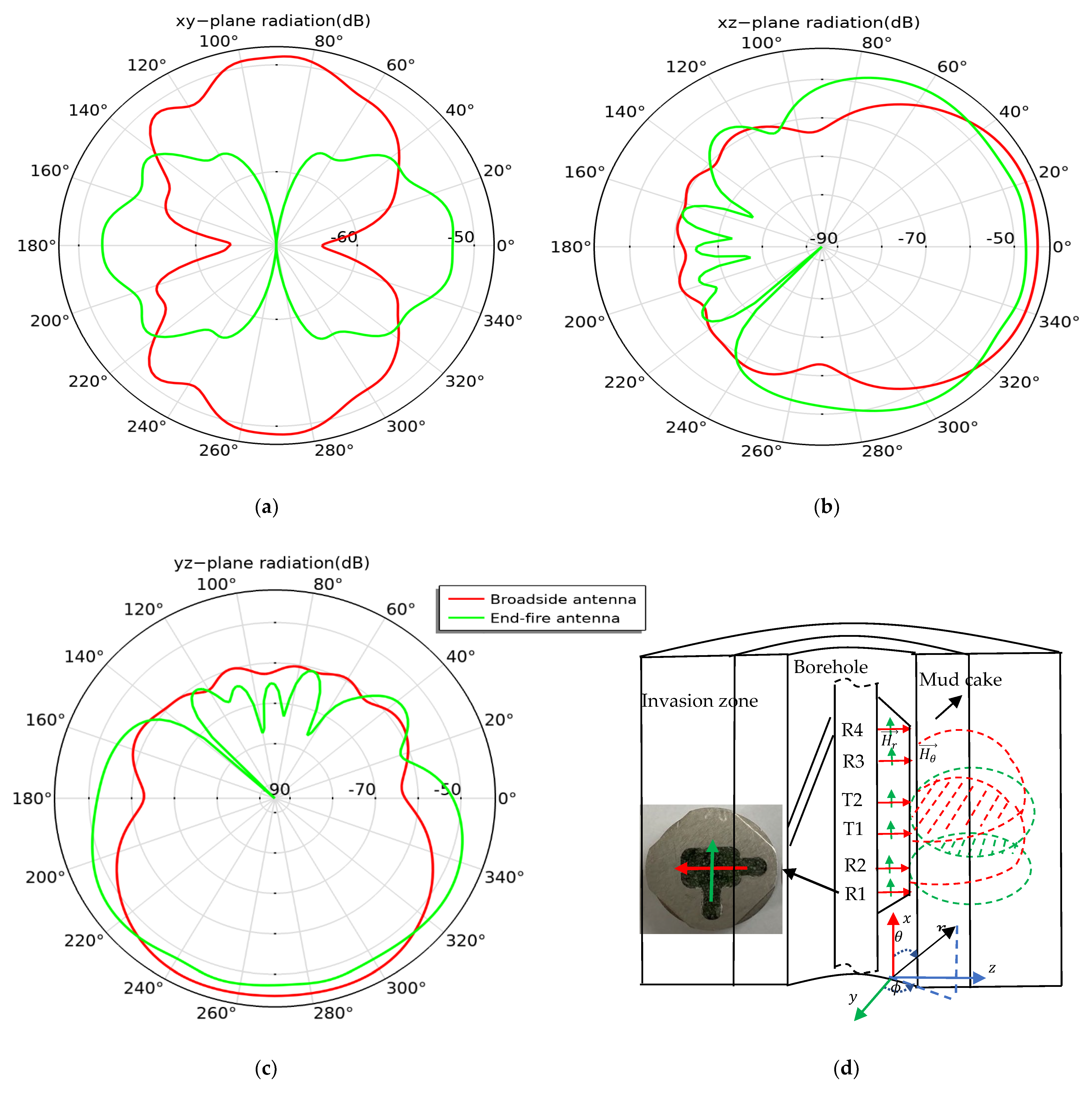



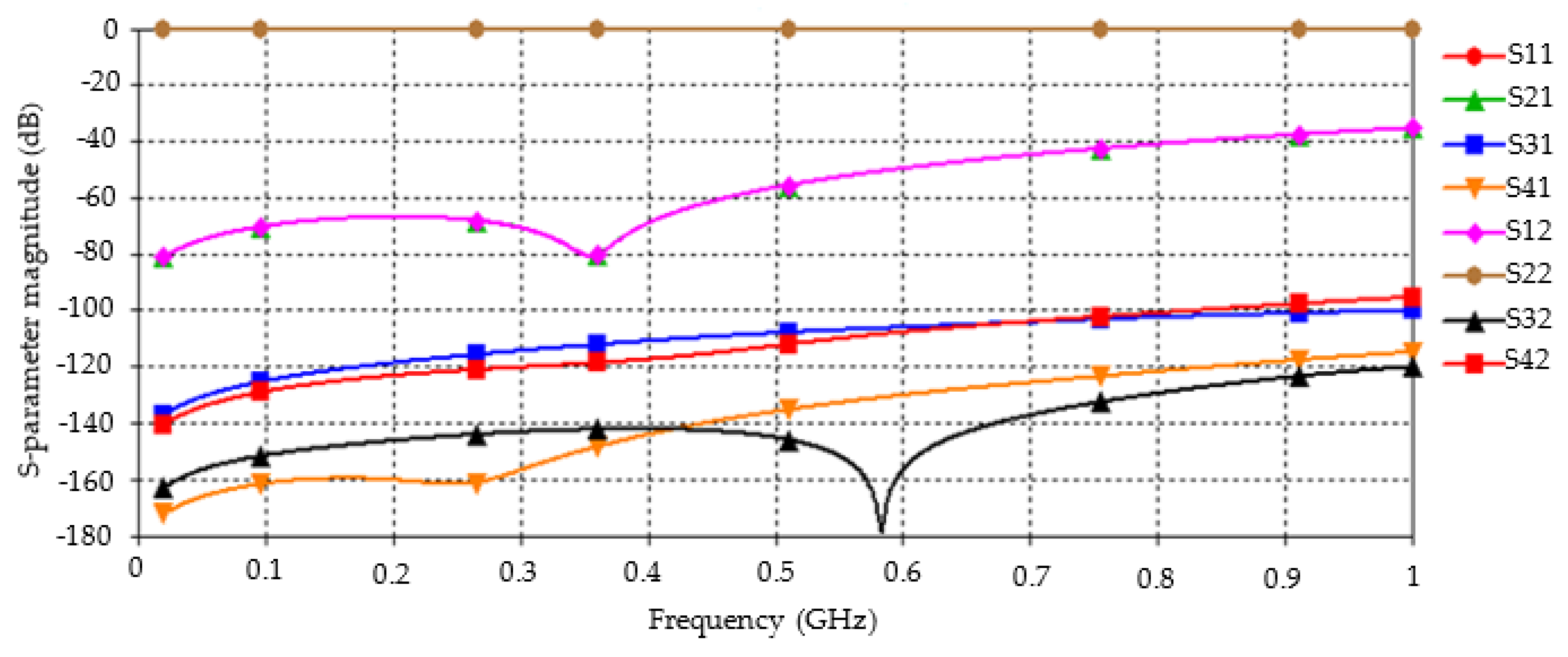
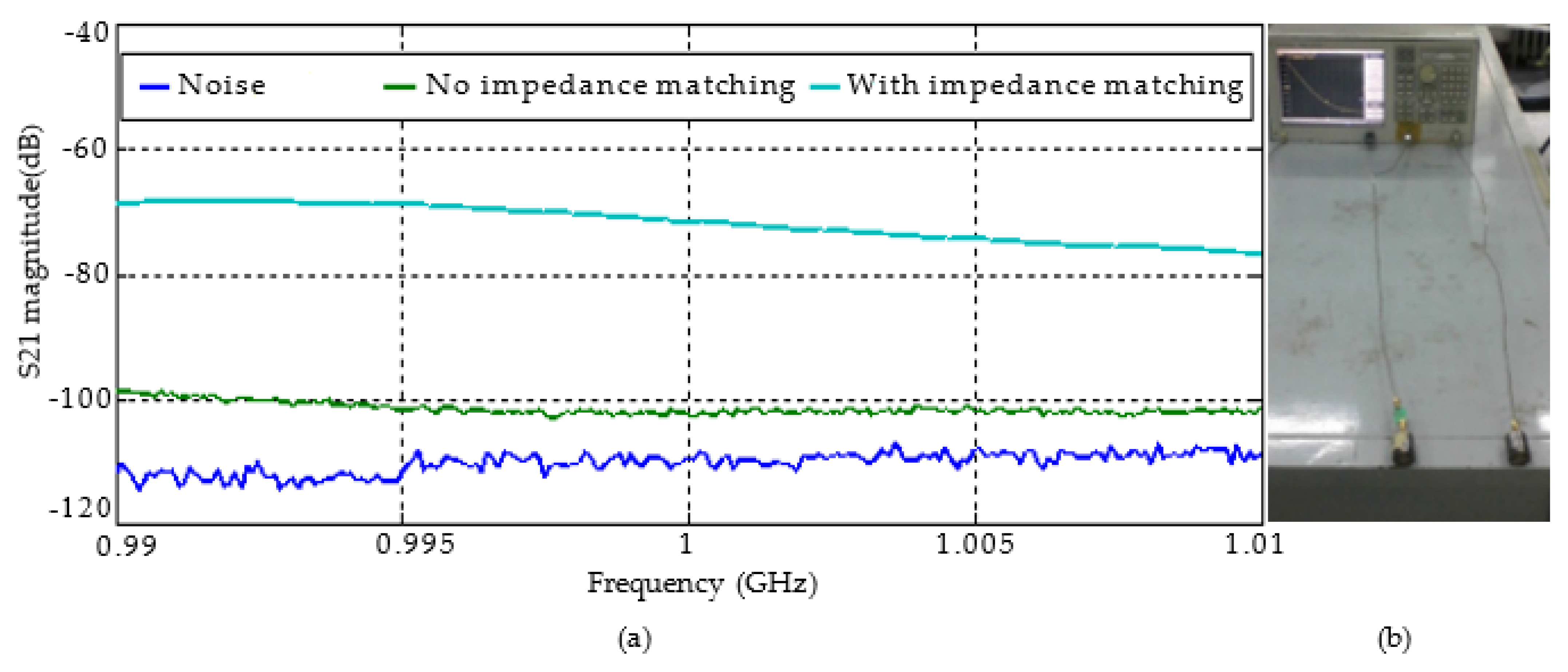
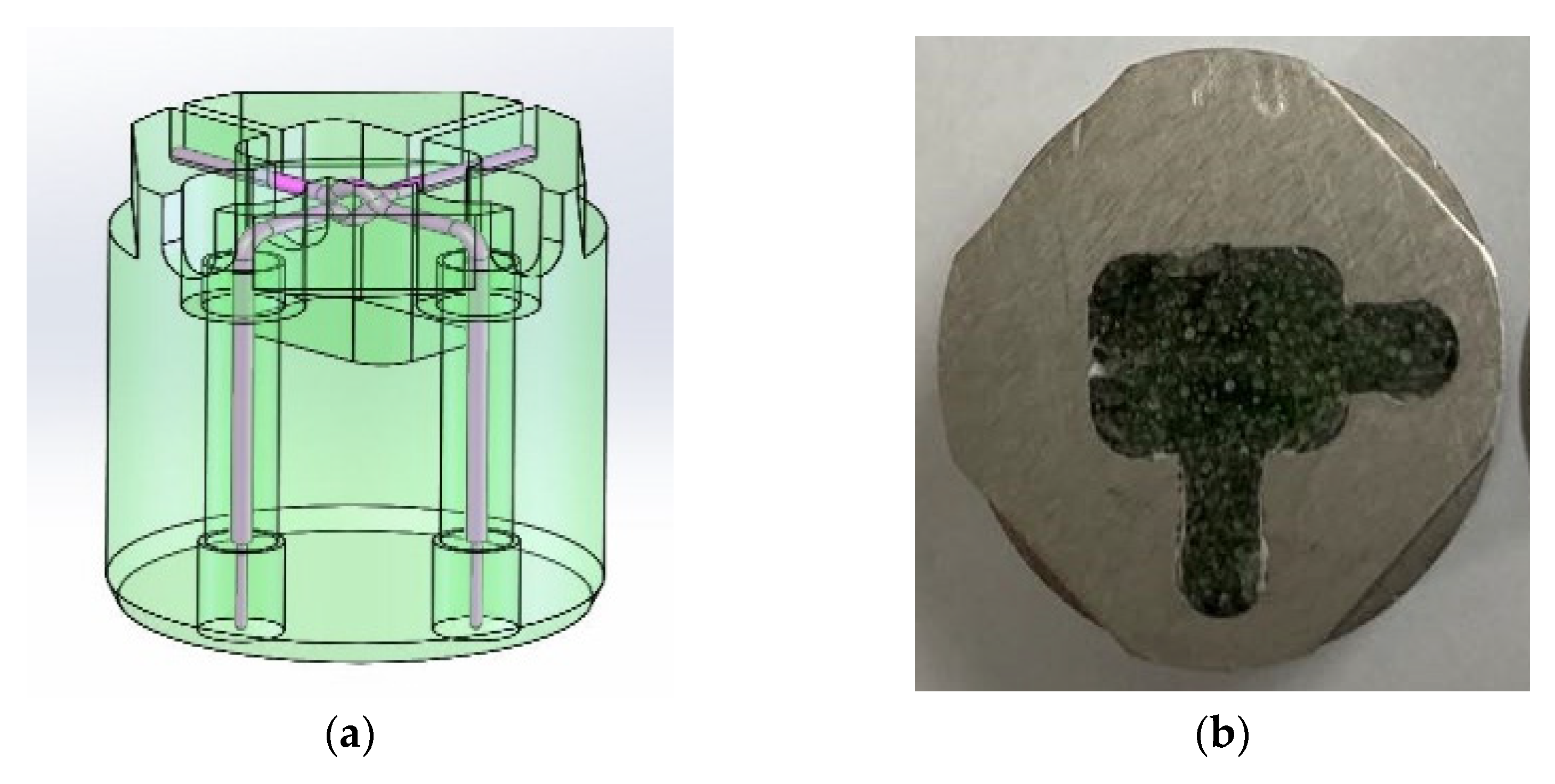





Publisher’s Note: MDPI stays neutral with regard to jurisdictional claims in published maps and institutional affiliations. |
© 2022 by the authors. Licensee MDPI, Basel, Switzerland. This article is an open access article distributed under the terms and conditions of the Creative Commons Attribution (CC BY) license (https://creativecommons.org/licenses/by/4.0/).
Share and Cite
Li, C.; Deng, S.; Li, Z.; Wu, J.; Lu, B.; Yang, J. Development and Application of Dual-Polarization Antenna for Dielectric Logging Sensor. Sensors 2022, 22, 7667. https://doi.org/10.3390/s22197667
Li C, Deng S, Li Z, Wu J, Lu B, Yang J. Development and Application of Dual-Polarization Antenna for Dielectric Logging Sensor. Sensors. 2022; 22(19):7667. https://doi.org/10.3390/s22197667
Chicago/Turabian StyleLi, Chen, Shaogui Deng, Zhiqiang Li, Jian Wu, Baoyin Lu, and Jutao Yang. 2022. "Development and Application of Dual-Polarization Antenna for Dielectric Logging Sensor" Sensors 22, no. 19: 7667. https://doi.org/10.3390/s22197667
APA StyleLi, C., Deng, S., Li, Z., Wu, J., Lu, B., & Yang, J. (2022). Development and Application of Dual-Polarization Antenna for Dielectric Logging Sensor. Sensors, 22(19), 7667. https://doi.org/10.3390/s22197667



